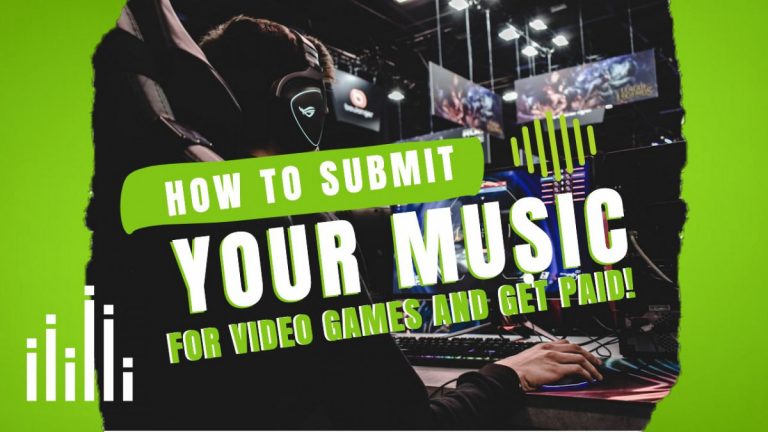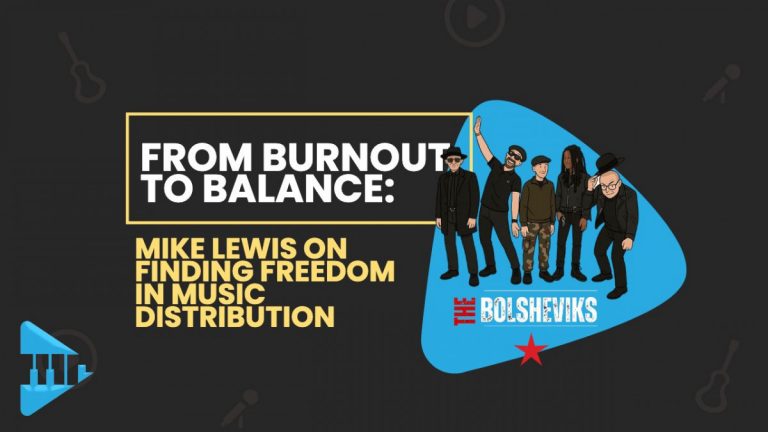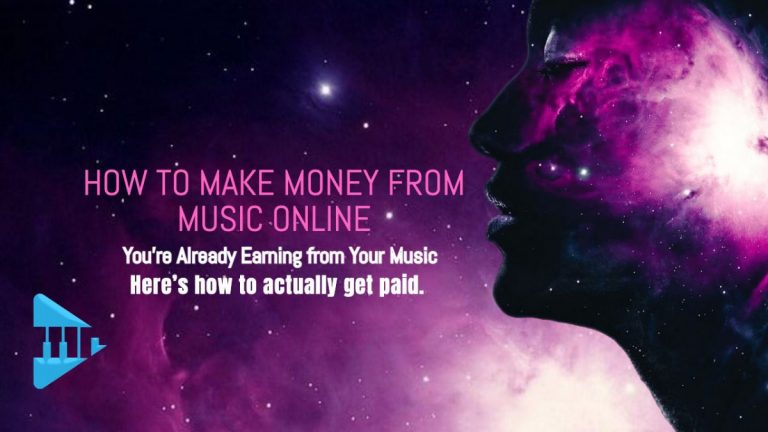Table of Contents
ToggleQuick Answer (TL;DR): Music Submission Opportunities– Where should I submit my music in 2025?
It depends on your goals.
Maybe you want playlist traction. Maybe you’re aiming for sync placements. Or you just want someone to hear your track and actually respond.
The right music submission opportunities depend on where you’re at and what you’re building.
Most guides list tools with no context.
This one helps you choose based on what actually fits your sound, your timing, and your grind.
What Submitting Your Music Really Looks Like in 2025
It’s a solo hustle, stretched across too many tabs.
You’re the artist and the publicist, the admin and the strategist.
And when your track goes out to another blog or playlist and you hear nothing back, it doesn’t just sting. It wears you down.
Different artists need different doors. Some want streams right away, others want a credit to build credibility, and some are chasing that first sync placement. Each of those goals needs a different approach. This guide lays out the paths so you can match your goal to the route that makes the most sense for you.
Why Most Music Submission Opportunities Don’t Work Anymore
You’ll find plenty of blogs listing platforms. But most skip the real question: Why are you submitting? What do you actually want to happen?
Too often, the assumption is you’re chasing streams. But most guides don’t cover what comes after you hit send.
And here’s the hard truth – many platforms just don’t match your moment.
SubmitHub’s approval rate is around 25%. Nearly 99,000 tracks hit streaming platforms every day.
You don’t need more options.
You need alignment: your music, your timing, your goals.
Five Real Paths for Submitting Your Music

There’s no one-size-fits-all when it comes to submitting your music.
Every platform serves a different purpose, and what works for someone on their second single might flop for someone prepping a sync-ready EP.
Here are five real paths artists use, depending on their goals.
Playlist Pitching Tools
If your main goal is streams, playlists are usually the first stop. Platforms like SubmitHub, Groover, and Daily Playlists connect you with curators in your genre. Some take a small fee, others are free, but all of them put you in front of people who can decide if your track fits.
Getting onto a playlist isn’t just a lucky break. The artists who do well usually pitch at the right time, target the curators who actually match their sound, and understand the listeners they’re trying to reach.
Blog and Review Sites
Trying to build buzz or credibility early in a release? Blogs can help.
Outlets like Indie Shuffle (indie tastemakers), Earmilk (culture meets music), and A&R Factory (emerging artist coverage) offer exposure that adds weight to your rollout.
These features look great in a press kit and help boost your name in search.
Not every blog drives traffic, but the right write-up can shift how new listeners see you.
Direct Outreach and EPKs
This is for the artists willing to do the slow work.
Personal emails, tailored EPKs, and small-playlist pitching might not feel glamorous, but they build real relationships.
When you reach out, explain why your track fits their sound and show that you’ve paid attention to what they’ve already shared. Small details like that can turn a cold pitch into something worth opening. If you don’t have an EPK yet, this guide will walk you through the basics.
In the end, blasting links to everyone rarely works, it’s the genuine connections that usually lead somewhere.
Sync-Ready Submission Platforms
Some artists reach a point where the music is ready.
The sound is tight, the metadata’s in place, and the rights are squared away.
That’s when sync becomes a real option.
At this point it’s less about chasing plays and more about landing placements, the kind that put your music into shows, trailers, games, or campaigns.
Sites like Melody Rights (sync-first, artist-led), Songtradr (licensing marketplace), and AudioSparx (music for media catalogs) give you ways to submit to sync supervisors and content producers.
The part that really counts is the prep. You’re not only sending a track, you’re making sure it’s a clean, license-ready asset that a supervisor can drop straight into their project without headaches.
Check out our 3-part series on the stages of the sync journey:
- Part 1: What Is a Synchronization License – the basics of sync and the rights involved.
- Part 2: How to Submit Music for Film and TV – how to prepare and pitch your tracks.
- Part 3: How to Get Sync Placements (Even When No One Emails Back) – what happens after you submit and how to stay ready.
Local and Listener-Led Platforms
Local wins can do more than boost your confidence. They build real traction.
Projects like Triple J Unearthed in Australia, BBC Introducing in the UK, and NPR’s Tiny Desk Contest in the US are designed to spotlight emerging talent.
Searching for music opportunities near me often pulls up local contests, open calls, or community platforms. These can feel small, but they’re often where the real connections start.
If your area has something similar, take advantage of it, local showcases might look small from the outside, but the people running them are often the tastemakers, bookers, and curators who can open real doors.
Each of these submission paths fits a different chapter in your career.
Up next, we’ll help you figure out which one fits your right now.
How to Choose the Right Music Submission Tool for Your Goals
Before sending another link out, take a second to think about what you actually want from it. The answer shapes where you should focus. Hip-hop, EDM, and metal scenes often have their own networks of blogs, playlists, and forums where listeners already gather, so it pays to start where your community already lives.
| If you’re… | Your Goal | Best Tools to Use | Why It Fits |
| Releasing your first or second single | Build early momentum and visibility | SubmitHub, Daily Playlists | Fast access to curators and potential playlist adds |
| Building a press kit for future pitches | Get quotes, backlinks, credibility | Indie Shuffle, A&R Factory | Press mentions make future outreach more effective |
| Prepping for a sync pitch | License your track for media | Melody Rights, Songtradr | Built for sync-ready music with rights, metadata, and delivery handled |
| Gearing up for a DIY campaign | Create connection and long-term reach | Direct outreach, EPK tools | Personalized messages to curators build trust and traction |
| Already active in your local scene | Get spotlighted by real people | BBC Introducing, Triple J Unearthed | Community-led platforms that actually break new artists |
Choosing the right path is only half the work.
Now let’s get your track submission-ready so when you do send it out, it lands.
How to Choose What Actually Fits You

Start with your goal
Are you trying to build buzz, land a sync, or get playlisted? The answer shapes everything that follows.
Use the chart above to match your moment
Pick a strategy that lines up with your time, budget, and energy level instead of spreading yourself thin.
Customize your outreach
Never blast the same pitch everywhere. Tailor it to the platform, the genre, or the curator. Small details show you’re paying attention.
Track your efforts
Track what you send. (See checklist above for how.)
Blend short and long plays
Free playlists and blog mentions can give quick wins. Sync prep and direct outreach build the kind of connections that pay off over time.
How to Prep Your Track for Submission

Every submission, whether it’s to a playlist, a blog, or a sync rep, comes down to one thing: are you making it easy for them to say yes?
That means your song isn’t the only thing being judged. The files, the metadata, even the way you pitch – they all matter. Here’s how to get your track ready so it doesn’t get skipped before it’s heard.
1. Deliver the Right File Format
Think about it this way: if a playlist curator or a sync rep wanted to drag your track straight into their project, would your files make that easy?
For streaming submissions, a clean MP3 is usually fine.
For sync, go further with polished WAVs, an instrumental, and stems if you’ve got them. What matters most is clarity. Label everything so no one’s left guessing.
If you’re unsure, read our breakdown of master royalties vs. publishing royalties to see why file types and ownership matter.
2. Tag and Label Everything
- Artist name, track title, genre, release year.
- Add ISRC and songwriter/publisher credits if you have them.
- For sync, double-check splits and ownership are correct. Here’s a guide on registering your music if you haven’t done that yet.
3. Have an EPK or Press Sheet Ready
Even a simple one works. Include a short bio, press photos, and a streaming link.
If you’re starting from scratch, use this guide to build an EPK.
4. Write a Focused Pitch
Most of the time, the people you’re pitching to are busy and skimming. A couple of sentences that explain what your track sounds like, why it makes sense for their audience, and what you’re working toward is all you need.
Share the link in a clean, clickable way and resist the urge to oversell. Respecting their time often gets you further than a long pitch ever will.
If you want deeper context, our post on how to sell your music covers framing your pitch the right way.
5. Track Where You Submit
Keep a simple log of who you pitched, when, and what you sent. A spreadsheet or notes app works. Patterns emerge over time and help you focus on the curators and platforms that actually respond.
A Real-World Path Without the Fairy Tale
Most artists don’t land a placement or playlist on the first try. Or the second.
One artist in the r/synclicensing community put it bluntly:
“I’ve been doing a lot of work sending emails, getting no word back, or just nothing connecting with my own music. I do want to keep going.”
– Reddit
That story echoes across the indie world. A first single goes to free playlist sites and gets silence. The next release hits two curators on SubmitHub, which makes sense given that the average approval rate is only about 25% (SubmitHub). Streams finally move, which gives enough momentum to build an EPK and land a blog feature.
A few tracks later, the same artist registers everything properly and uploads to Melody Rights. They don’t get a Netflix placement overnight, but they do land a modest sync in a web series.
Not overnight success. Just steady steps that prove persistence pays.
From Playlists to Sync: Build with Intention
Every artist’s journey looks different. Playlists and blogs can spark early buzz. Sync turns polished tracks into income.
If sync is your next move, Melody Rights keeps the admin simple. Your tracks stay with your distributor, and we handle the licensing side so placements are actually within reach.
There’s no shortcut. But there is a smarter way.
FAQs
Where can I submit my music for free in 2025?
Some great free tools include SoundPlate, AddThisMusic, and Daily Playlists. These platforms let you pitch tracks to playlist curators without paying. Just know the competition is high.
What is the best way to get on Spotify playlists?
Use a mix of curated platforms like SubmitHub or Groover, and pitch directly to playlist owners. Tailor your message and include a clean, focused link. Also, release consistently and build engagement to increase your chances.
How do I get my music placed in a TV show or film?
Use a sync-focused platform like Melody Rights or AudioSparx. These platforms distribute your tracks to active music supervisors and agents. Make sure your metadata, rights, and splits are in order first.
What’s the difference between sync licensing and playlist pitching?
Playlist pitching targets curators on platforms like Spotify or Apple Music to boost streaming. Sync licensing is about placing your music in visual media like TV, film, or ads and earning royalties from usage, not just plays.



